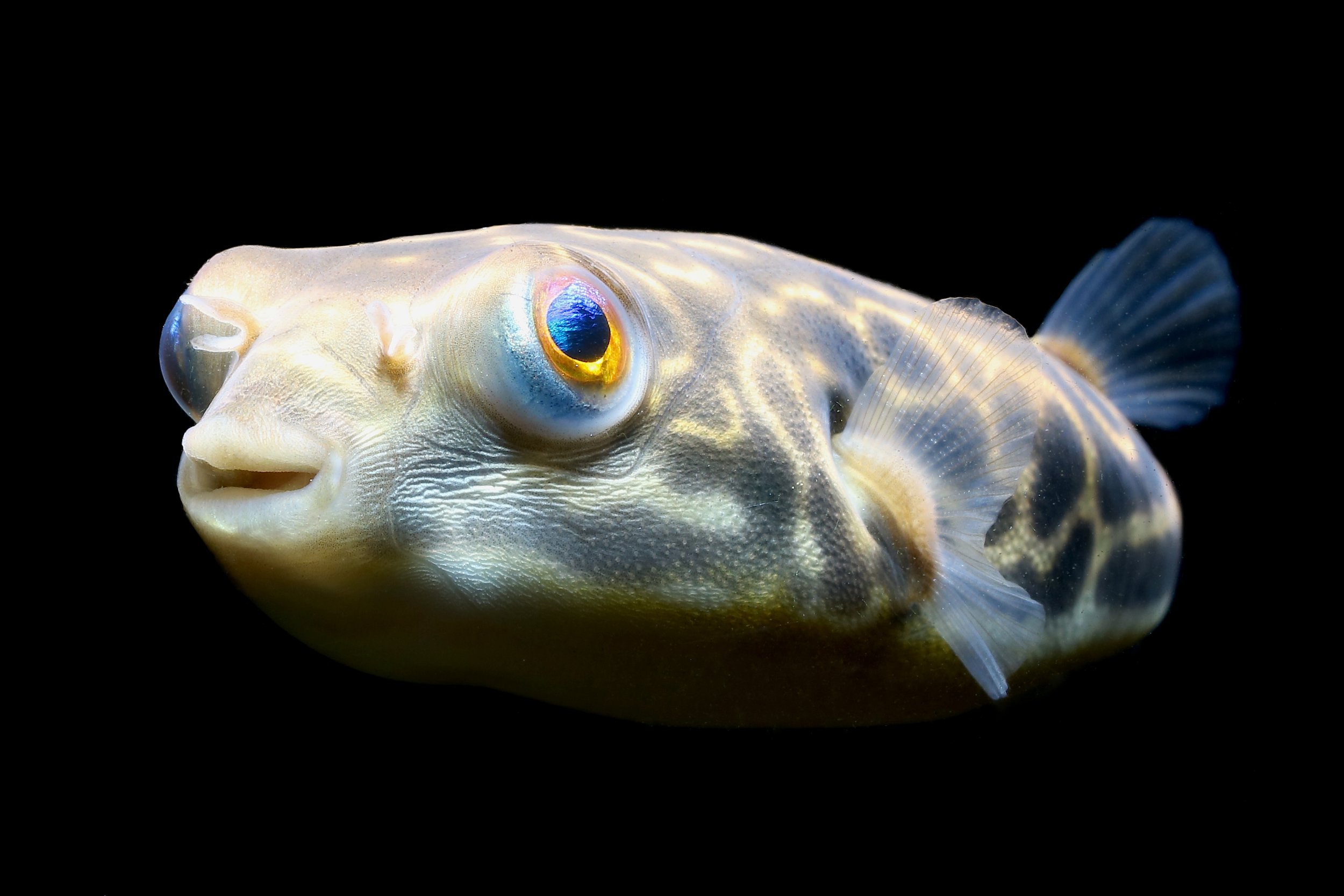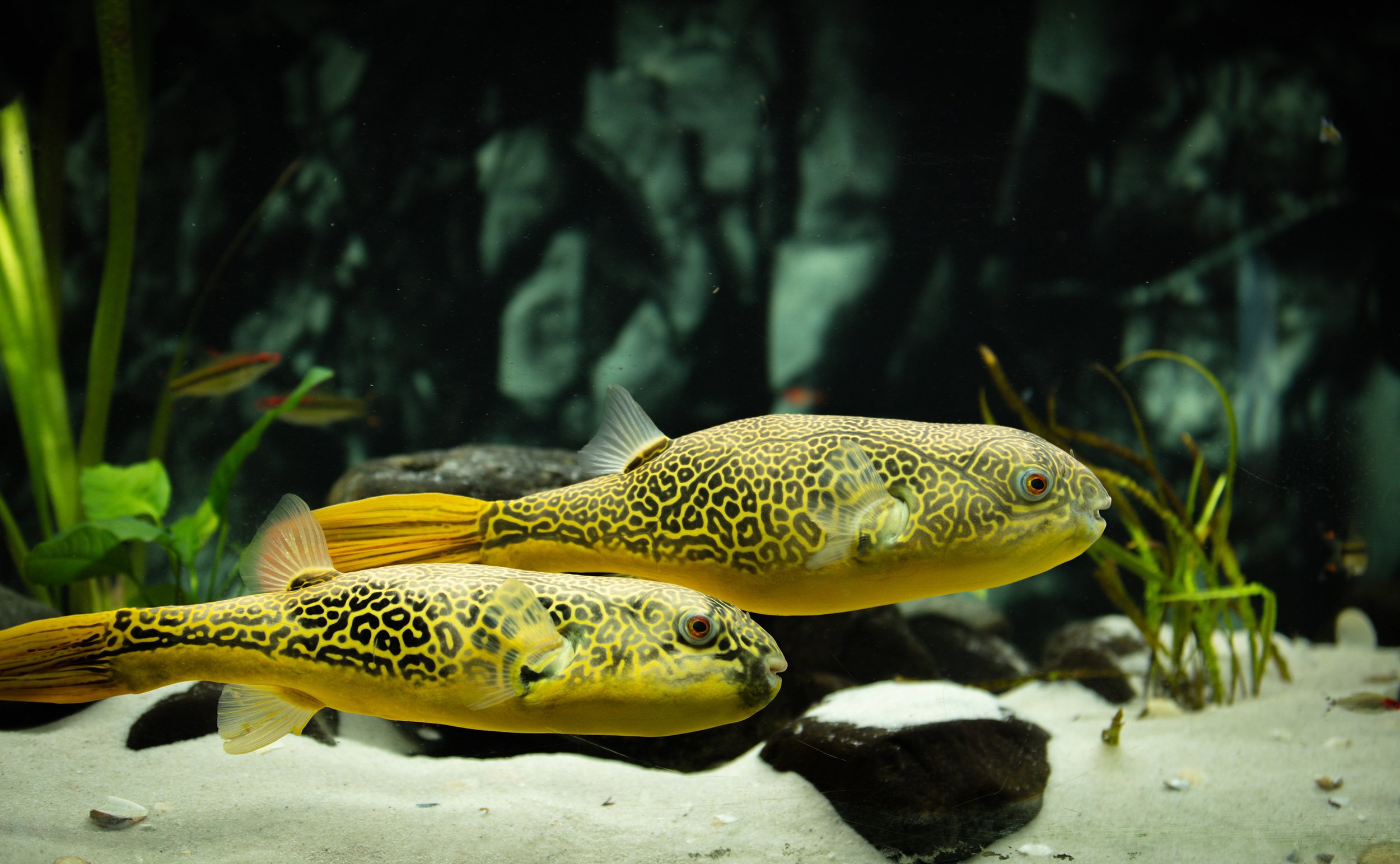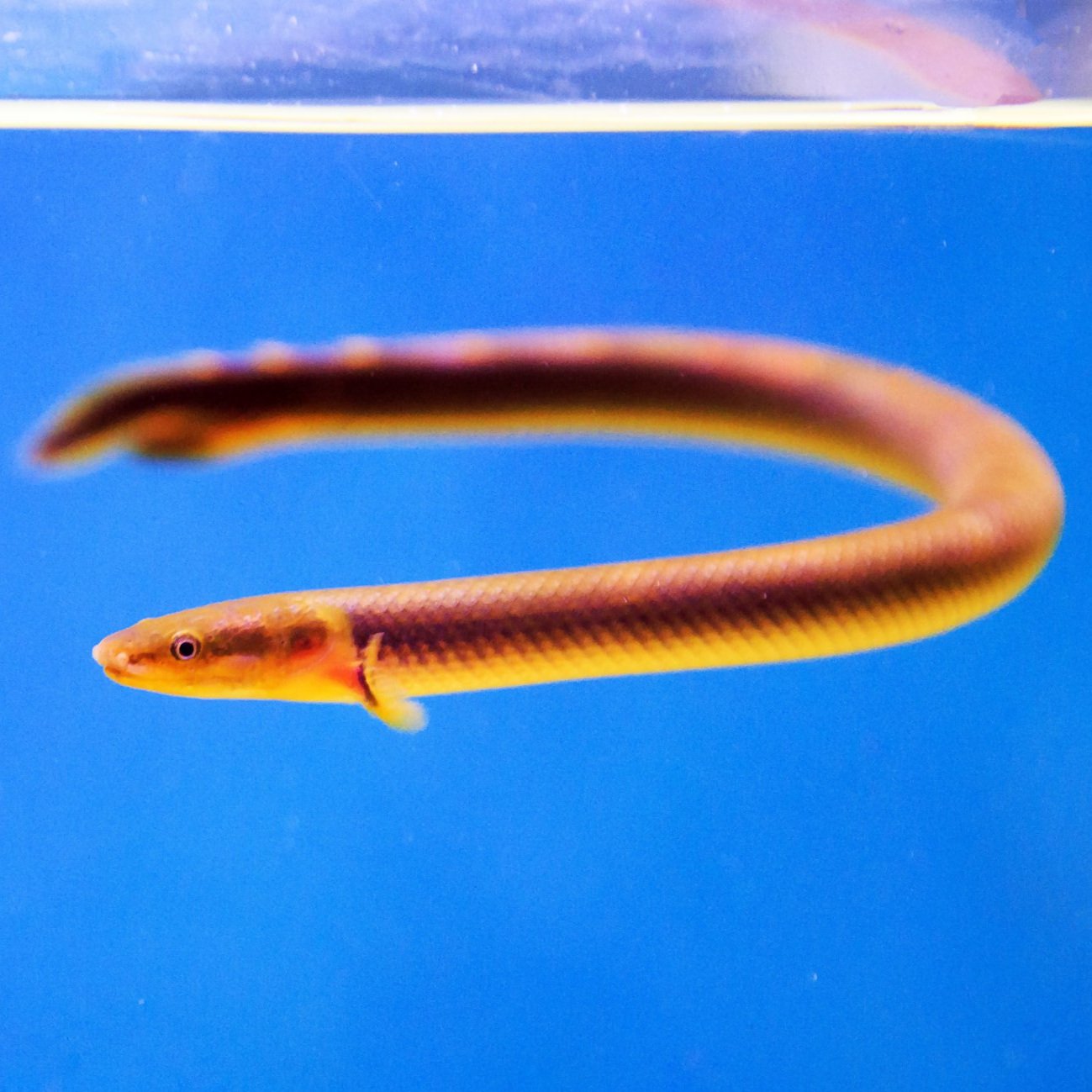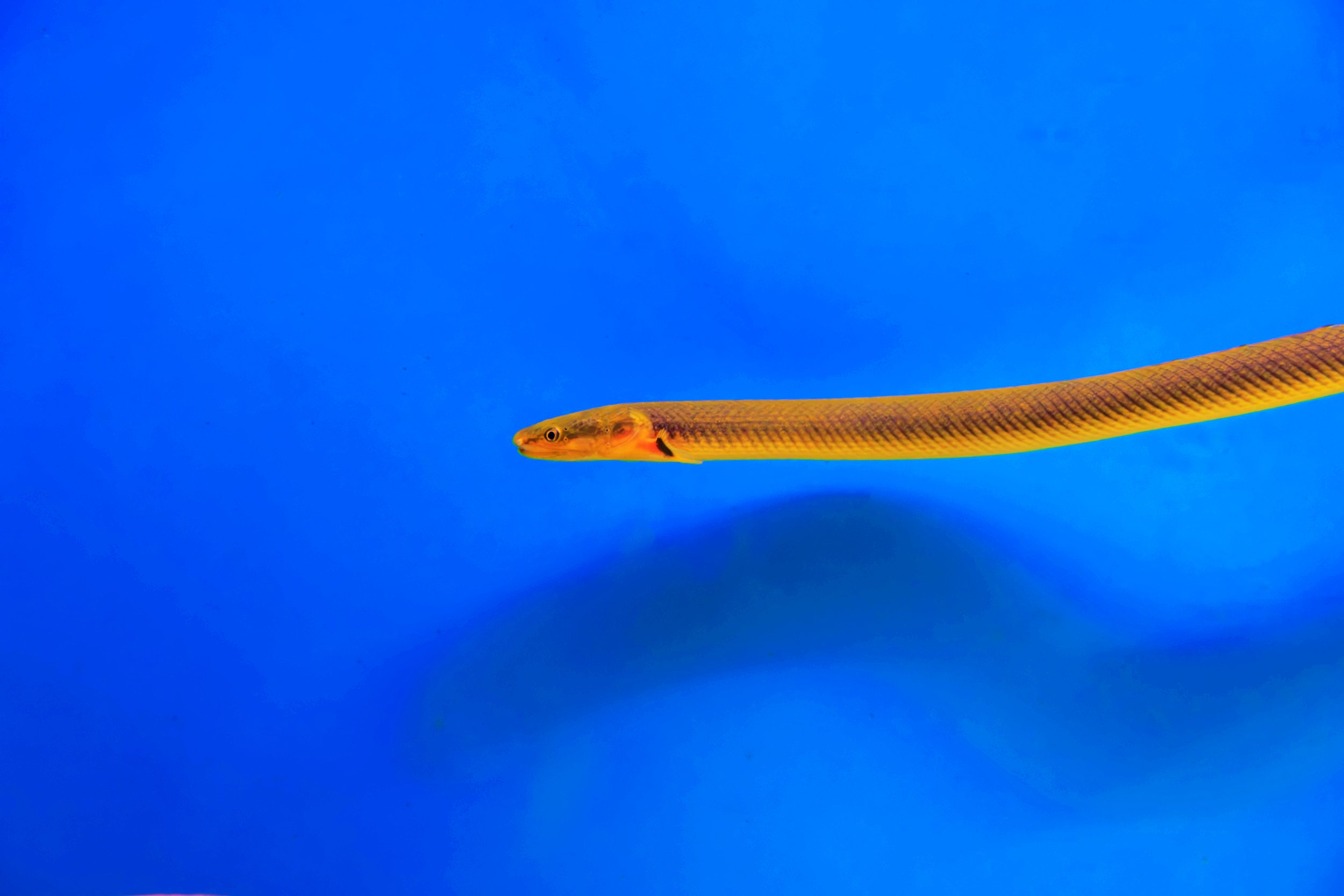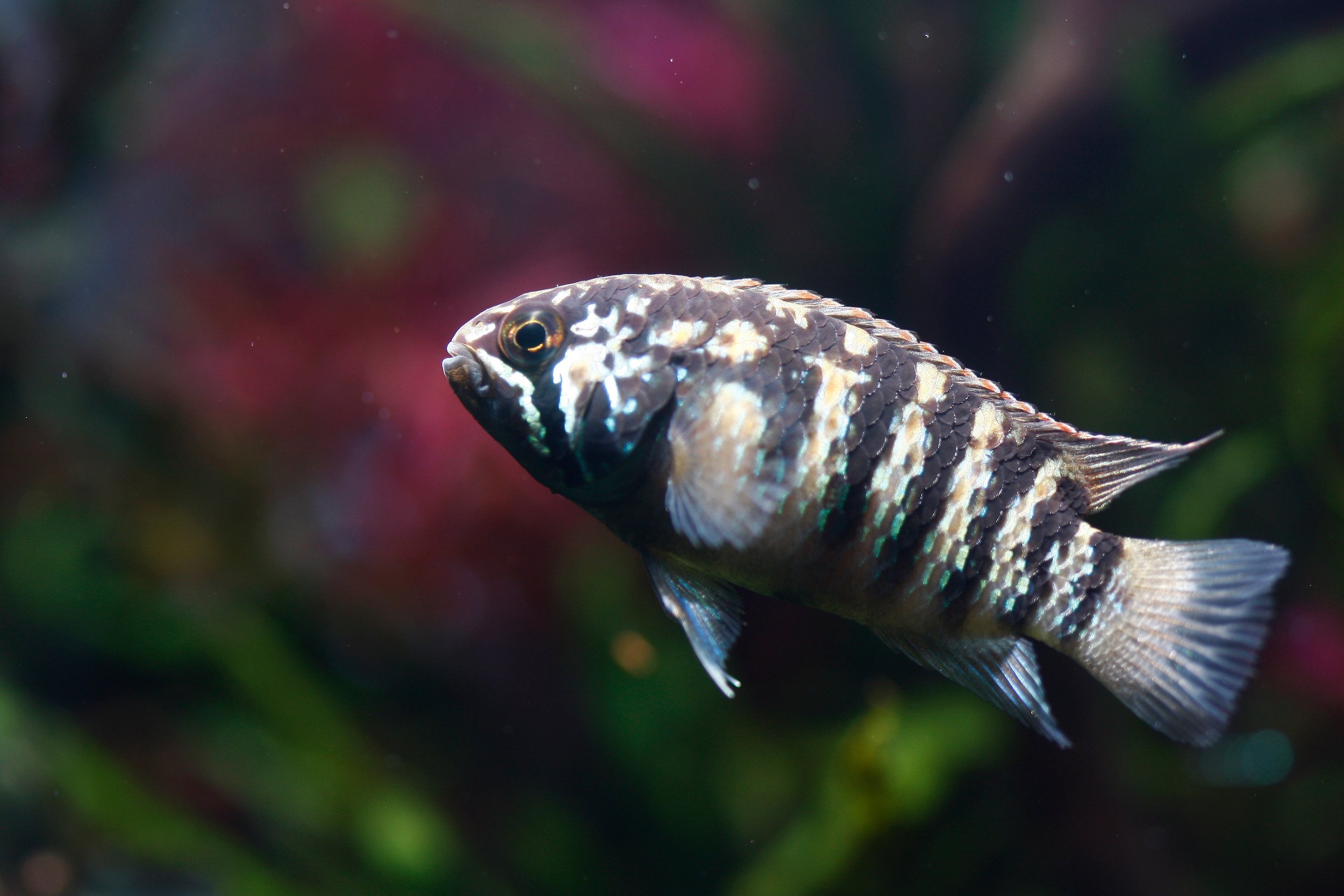Denison's Barb-M
The Denison’s Barb, scientifically known as Sahyadria denisonii, is a striking and energetic freshwater fish species that has become a favorite among aquarists for its vibrant colors and dynamic behavior. Native to the fast-flowing rivers and streams of the Western Ghats in India, this fish is a beautiful and lively addition to well-maintained community aquariums.
Physically, the Denison’s Barb is renowned for its distinctive and eye-catching coloration. Its sleek, torpedo-shaped body is adorned with a bright red stripe that runs from its snout through the eye and along the lateral line, fading towards the middle of the body. Below the red stripe, a bold black stripe extends from the tip of the snout to the base of the tail. The fins are often accented with hues of yellow and black, adding to the overall visual appeal. Mature specimens typically reach lengths of around 4 to 6 inches (10 to 15 centimeters), making them suitable for medium to large-sized aquariums.
In aquariums, Denison’s Barbs thrive in well-planted tanks with plenty of open swimming space and a moderate to strong water flow to mimic their natural habitats of fast-moving streams. They appreciate a substrate of fine gravel or sand and benefit from the presence of rocks, driftwood, and live plants, which provide cover and create a naturalistic environment. These fish are social and should be kept in groups of at least six individuals to ensure their well-being and encourage natural schooling behavior.
Water parameters for Denison’s Barbs should closely resemble those of their native environment. They prefer slightly acidic to neutral water with a pH range of 6.5 to 7.5 and temperatures between 72 to 77°F (22 to 25°C). Maintaining stable water conditions with regular water changes and good filtration is crucial for their health and vitality.
Feeding Denison’s Barbs is relatively straightforward, as they are omnivorous and will accept a variety of foods. They eagerly consume high-quality flakes, pellets, and granules, as well as live or frozen foods such as bloodworms, brine shrimp, and daphnia. Providing a varied diet ensures they receive all the necessary nutrients for optimal health and vibrant coloration.
Breeding Denison’s Barbs in captivity is challenging and not commonly achieved in home aquariums. They require specific conditions and a large tank to encourage spawning behavior. In their natural habitat, they migrate to shallow, fast-flowing waters to breed. Replicating these conditions in captivity is difficult, but with optimal water parameters, a spacious tank, and appropriate stimuli, breeding may occur. The eggs and fry are delicate and require meticulous care and attention.
Overall, the Denison’s Barb is a captivating and energetic addition to freshwater aquariums, prized for its stunning appearance, peaceful nature, and active behavior. With proper care and attention to their specific requirements, these beautiful fish can thrive and bring joy to aquarists of all levels of experience, enhancing the beauty and vibrancy of any aquatic environment.
The Denison’s Barb, scientifically known as Sahyadria denisonii, is a striking and energetic freshwater fish species that has become a favorite among aquarists for its vibrant colors and dynamic behavior. Native to the fast-flowing rivers and streams of the Western Ghats in India, this fish is a beautiful and lively addition to well-maintained community aquariums.
Physically, the Denison’s Barb is renowned for its distinctive and eye-catching coloration. Its sleek, torpedo-shaped body is adorned with a bright red stripe that runs from its snout through the eye and along the lateral line, fading towards the middle of the body. Below the red stripe, a bold black stripe extends from the tip of the snout to the base of the tail. The fins are often accented with hues of yellow and black, adding to the overall visual appeal. Mature specimens typically reach lengths of around 4 to 6 inches (10 to 15 centimeters), making them suitable for medium to large-sized aquariums.
In aquariums, Denison’s Barbs thrive in well-planted tanks with plenty of open swimming space and a moderate to strong water flow to mimic their natural habitats of fast-moving streams. They appreciate a substrate of fine gravel or sand and benefit from the presence of rocks, driftwood, and live plants, which provide cover and create a naturalistic environment. These fish are social and should be kept in groups of at least six individuals to ensure their well-being and encourage natural schooling behavior.
Water parameters for Denison’s Barbs should closely resemble those of their native environment. They prefer slightly acidic to neutral water with a pH range of 6.5 to 7.5 and temperatures between 72 to 77°F (22 to 25°C). Maintaining stable water conditions with regular water changes and good filtration is crucial for their health and vitality.
Feeding Denison’s Barbs is relatively straightforward, as they are omnivorous and will accept a variety of foods. They eagerly consume high-quality flakes, pellets, and granules, as well as live or frozen foods such as bloodworms, brine shrimp, and daphnia. Providing a varied diet ensures they receive all the necessary nutrients for optimal health and vibrant coloration.
Breeding Denison’s Barbs in captivity is challenging and not commonly achieved in home aquariums. They require specific conditions and a large tank to encourage spawning behavior. In their natural habitat, they migrate to shallow, fast-flowing waters to breed. Replicating these conditions in captivity is difficult, but with optimal water parameters, a spacious tank, and appropriate stimuli, breeding may occur. The eggs and fry are delicate and require meticulous care and attention.
Overall, the Denison’s Barb is a captivating and energetic addition to freshwater aquariums, prized for its stunning appearance, peaceful nature, and active behavior. With proper care and attention to their specific requirements, these beautiful fish can thrive and bring joy to aquarists of all levels of experience, enhancing the beauty and vibrancy of any aquatic environment.
The Denison’s Barb, scientifically known as Sahyadria denisonii, is a striking and energetic freshwater fish species that has become a favorite among aquarists for its vibrant colors and dynamic behavior. Native to the fast-flowing rivers and streams of the Western Ghats in India, this fish is a beautiful and lively addition to well-maintained community aquariums.
Physically, the Denison’s Barb is renowned for its distinctive and eye-catching coloration. Its sleek, torpedo-shaped body is adorned with a bright red stripe that runs from its snout through the eye and along the lateral line, fading towards the middle of the body. Below the red stripe, a bold black stripe extends from the tip of the snout to the base of the tail. The fins are often accented with hues of yellow and black, adding to the overall visual appeal. Mature specimens typically reach lengths of around 4 to 6 inches (10 to 15 centimeters), making them suitable for medium to large-sized aquariums.
In aquariums, Denison’s Barbs thrive in well-planted tanks with plenty of open swimming space and a moderate to strong water flow to mimic their natural habitats of fast-moving streams. They appreciate a substrate of fine gravel or sand and benefit from the presence of rocks, driftwood, and live plants, which provide cover and create a naturalistic environment. These fish are social and should be kept in groups of at least six individuals to ensure their well-being and encourage natural schooling behavior.
Water parameters for Denison’s Barbs should closely resemble those of their native environment. They prefer slightly acidic to neutral water with a pH range of 6.5 to 7.5 and temperatures between 72 to 77°F (22 to 25°C). Maintaining stable water conditions with regular water changes and good filtration is crucial for their health and vitality.
Feeding Denison’s Barbs is relatively straightforward, as they are omnivorous and will accept a variety of foods. They eagerly consume high-quality flakes, pellets, and granules, as well as live or frozen foods such as bloodworms, brine shrimp, and daphnia. Providing a varied diet ensures they receive all the necessary nutrients for optimal health and vibrant coloration.
Breeding Denison’s Barbs in captivity is challenging and not commonly achieved in home aquariums. They require specific conditions and a large tank to encourage spawning behavior. In their natural habitat, they migrate to shallow, fast-flowing waters to breed. Replicating these conditions in captivity is difficult, but with optimal water parameters, a spacious tank, and appropriate stimuli, breeding may occur. The eggs and fry are delicate and require meticulous care and attention.
Overall, the Denison’s Barb is a captivating and energetic addition to freshwater aquariums, prized for its stunning appearance, peaceful nature, and active behavior. With proper care and attention to their specific requirements, these beautiful fish can thrive and bring joy to aquarists of all levels of experience, enhancing the beauty and vibrancy of any aquatic environment.





